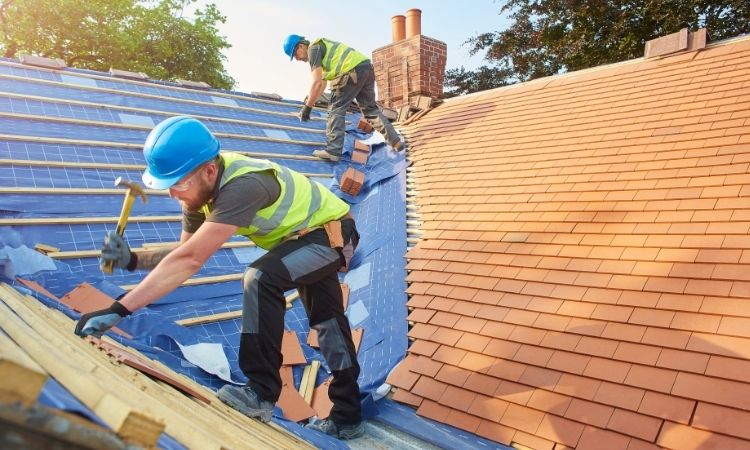Roofing is more than just a layer of protection — it’s the defining shield of a structure, influencing durability, energy efficiency, and visual appeal. From the rustic charm of clay tiles to the sleek sophistication of modern metal panels, roofing has evolved into a perfect blend of engineering and artistry. As construction demands grow more complex and climate conditions become increasingly unpredictable, the role of roofing has shifted from a basic necessity to a strategic investment in long-term performance and sustainability.
Expert Market Research: Insights into the United States Roofing Market
Expert Market Research highlights that the United States roofing market is undergoing a major transformation fueled by changing consumer expectations, advancements in materials, and a shift toward sustainable construction practices. The demand for energy-efficient roofs, storm-resistant designs, and innovative materials is rising steadily. Experts emphasize that companies investing in research and development, while also focusing on skilled workforce training, are best positioned to meet evolving needs. This transformation is not just about aesthetics — it’s about creating solutions that enhance property value, reduce maintenance costs, and support a greener built environment.
Why Roofing Decisions Shape Long-Term Value
A roof is a building’s first line of defense against the elements, making it a critical factor in overall property health. The right roofing choice can drastically reduce energy costs, improve indoor comfort, and extend the lifespan of a building. Beyond the obvious benefits of keeping water out, modern roofs are designed to resist fire, reflect heat, absorb rainwater, and even integrate renewable energy systems like solar panels. This multifunctional role has made roofing decisions an essential part of construction planning, whether for residential, commercial, or industrial projects.
United States Roofing Market: A Closer View
Across the United States, roofing needs vary by climate, geography, and architectural style. Coastal areas often demand corrosion-resistant materials and high wind ratings, while colder regions focus on insulation and snow-shedding capabilities. In sunnier states, reflective and heat-resistant roofs are gaining traction to combat rising temperatures. Urban areas are experimenting with green roofs, rooftop gardens, and integrated solar designs, while suburban homeowners often lean toward asphalt shingles or metal systems for a balance of affordability and longevity. This regional diversity requires roofing providers to be versatile, adaptive, and innovative.
Innovations Driving Roofing Forward
The roofing industry is in the midst of a technological revolution. Modern advancements are making roofs lighter, stronger, and more eco-friendly than ever before. Solar-integrated shingles, cool roofing membranes, and advanced waterproofing solutions are transforming expectations. Digital tools like drone inspections and 3D modeling are speeding up project planning and improving precision in installation. Even the maintenance side of roofing is changing, with sensors capable of detecting leaks, heat loss, and structural stress before they become costly problems.
Sustainability: A Core Roofing Priority
Sustainability has shifted from a buzzword to a baseline requirement in roofing. Materials with high recyclability, energy-saving coatings, and extended lifespans are increasingly sought after by both homeowners and businesses. Green roofs, which use vegetation to improve insulation and manage stormwater, are gaining popularity in cities. Roofing systems that reduce heat absorption can cut cooling costs and lessen the urban heat island effect. The goal is no longer just to protect a building but also to contribute positively to the surrounding environment.
The Importance of Skilled Roofing Installation
No matter how advanced a roofing material is, its performance ultimately depends on proper installation. Skilled labor ensures that a roof meets both functional and aesthetic goals while complying with safety and building codes. The precision required for flashing, sealing, and structural alignment can make or break a roof’s lifespan. As demand grows for high-performance roofing, the need for well-trained installers becomes even more crucial. Many roofing firms are now investing in certifications, apprenticeships, and specialized training to keep pace with evolving techniques.
Balancing Cost with Long-Term Benefits
Price is often the first consideration when selecting roofing materials, but focusing solely on upfront cost can be short-sighted. Investing in high-quality, durable materials can save money over the long term through reduced repairs, lower energy bills, and extended replacement intervals. Financing options, extended warranties, and energy-efficiency incentives are making premium roofing more accessible to property owners. Educating buyers on lifecycle value helps them make informed decisions that align with both their budget and sustainability goals.
Roofing in a Changing Climate
As climate patterns shift, roofing must adapt to withstand more extreme conditions. Heat waves, heavier storms, and fluctuating seasonal patterns are influencing material choices and design standards. Impact-resistant shingles, reinforced fastening systems, and water-shedding designs are becoming the norm in many areas. In addition, roofs are increasingly expected to work in harmony with renewable energy systems, water collection setups, and smart building technologies to create integrated, future-ready structures.
Looking Ahead: Smarter, Greener, Longer-Lasting Roofs
The future of roofing lies in integration, innovation, and intelligence. Imagine roofs that actively regulate temperature, self-repair small damages, and communicate with building systems to optimize performance. Emerging materials promise even greater strength with reduced environmental impact, while digital advancements will continue to improve installation precision and maintenance efficiency. As property owners seek to balance beauty, performance, and sustainability, the roofing sector will remain at the forefront of architectural and technological innovation.
Roofing That Protects, Performs, and Inspires
Roofing has evolved into a sophisticated field where design meets engineering and sustainability. The rise of advanced materials, new installation techniques, and climate-conscious designs has transformed the way we think about roofs. For homeowners, builders, and commercial property owners, investing in the right roofing solution means securing a safer, more energy-efficient, and visually appealing future. In an era where every component of a building must deliver both function and value, the roof stands as one of the most important choices a property owner will ever make.

